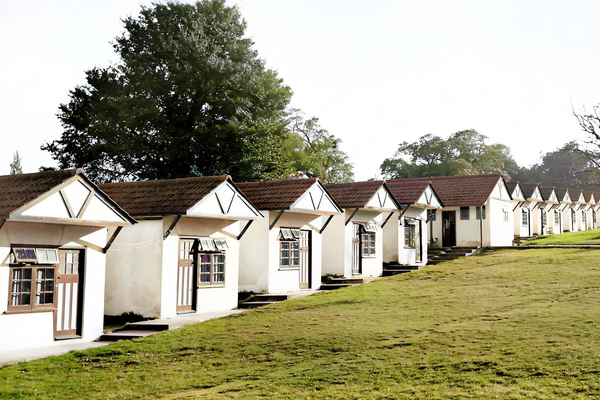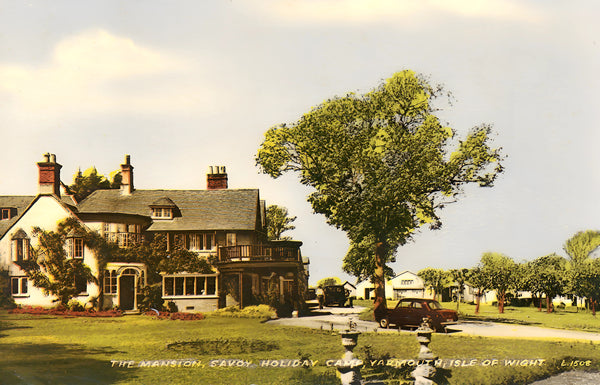Gorleston Holiday Camp was the brainchild of Charles Haigh who raised the necessary finance by forming a syndicate of local businessmen. The 12-acre camp opened in June 1937 at a ceremony attended by 300 local dignitaries which included the owners of several nearby holiday camps – J Fletcher Dodd (Caister), Jack Bishop (Seacroft) and Herbert Potter (Potters Resort). It was aimed at the upper end of the market – “the camp will be equal to the best in the country and worthy of the dignity and importance of Gorleston”. The owners pledged to “do their utmost to preserve the old school tie atmosphere without being too highbrow”.


The architects were Ernest & Geoffrey Buckingham and it was built by E Moore & Sons, one of the original syndicate members.
Charles Haigh was appointed manager and his son Stan became entertainments manager. The original colour scheme was described as “green and tango”. The concrete-built chalets boasted of electric lighting and sinks with hot and cold water, quite luxurious for the time. Communal toilet blocks were dotted around the site with an extra charge being made for baths. It could accommodate 400 guests on a full board basis with all meals being included and taken in the large communal dining hall.


It was built on land that once formed part of the Elmhurst House estate. The house still remained and was being run as a separate hotel business by Samuel Nash.
The Lowestoft to Great Yarmouth railway line passed directly along the eastern side of the camp and Gorleston station was a 5 minute walk using a private footpath which parelled the tracks.


In 1951 the camp was taken by the Thrower family (Lin and Grace). I’m not sure if they bought the camp or just took over the management. Around the same time Elmhurst House was incorporated into the camp offering rooms in the house if desired.

Starting in 1953 the camp became well known for their holidays for physically disabled people, usually for 2 weeks towards the end of each season. These continued right up until the camp closed. Special reduced rates were charged and celebrities performing in Great Yarmouth would often stop by for a visit.
In 1961 an outdoor swimming pool was built. The following year a small plane giving pleasure flights out of Caister lost control and narrowly avoided the camp. It ended up in the garden of a house in nearby Elmhurst Close killing all 4 people on board.

During the mid-1960s the term “holiday camp” had become unfashionable with many rebranding themselves as holiday villages, centres and even “chalet hotels” . In 1968 the Gorleston camp went one step further and completely renamed itself as Elmhurst Court.
In 1970 the adjacent railway line and station were closed and the camp itself closed at the end of 1973. Everything was demolished two years later, including the old house. The area occupied by the camp is now the Leman Road housing estate. The area occupied by Elmhurst House is now Wedgewood Court. The only surviving feature from the old camp are a pair of concrete stairways which led up to Bridge Road. These are still in use by residents today.



